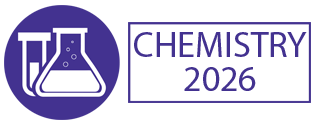Ink And Paper Analysis
Ink And Paper Analysis Is An Important Forensic Technique Used To Examine Documents And Other Written Materials. It Is Used To Authenticate Documents, Verify Provenances, Compare With Known Authorship Or Determine The Age Of A Questioned Document. The Analysis Involves Both The Examination Of The Paper And The Ink Used On The Paper. Paper Can Be Classified As Based On Its Origin, Physical And Chemical Properties, And Composition. It Is Imaged And Examined Under A Microscope For The Presence Of Watermarks, Filigree Patterns, Or Other Identifiers. The Examination May Also Address The Origin Of The Paper And The Age Of The Paper, As Certain Paper-Making Processes And Fibers Used Were In Circulation During Specific Eras. Ink Analysis Involves The Identification And Comparison Of Writing Instruments, The Examination Of Ink And Dry Media Colourants, And The Examination Of Properties Such As Solubility, Chemical Reactivity, And Light Fastness. The Visible Components Of Ink Are Made Up Of Four Key Components: The Carrier, Dye, Pigment, Or Oxidizing Agent; The Vehicle; The Binder; And The Optional Additional Ingredients Like Preservatives. Alterations To The Ink Are Sometimes Detected And Examined To Determine If The Document Has Been Altered. Ink And Paper Analysis Is Then Used To Compare Unknown Authorship To Known Authorship, Identify Documents Obscured By Alterations Or Extensive Aging, Discern If Documents Have Been Forged, Detect Alterations And Counterfeiting, And Verify The Age Of A Document. The Entire Analysis Process Is Carefully Documented To Ensure That The Results Are Valid And Trustworthy. Ink And Paper Analysis Is A Critical Component Of Document Examination, A Branch Of The Larger Field Of Forensic Science. Documents Can Be Extremely Revealing Of A Person’s Thoughts, Plans, And Actions, So The Importance Of Ink And Paper Analysis In Forensic Practice Cannot Be Overstressed.

Hossam A Gabbar
Ontario Tech University, Canada
Victor John Law
University College Dublin, Ireland
Alexander Bagaturyants
National Research Nuclear University MEPhI, Russian Federation
Sergey Suchkov
N.D. Zelinskii Institute for Organic Chemistry of the Russian Academy of Sciences, Russian Federation
Shree Niwas Chaturvedi
Centre for Aptitude Analysis and Talent Search, India
Pieter Samyn
SIRRIS, Belgium




Title : Advances in plasma-based radioactive waste treatment
Hossam A Gabbar, Ontario Tech University, Canada
Title : Unraveling the ultrastructure and functions of the neuronal membrane skeleton using super-resolution fluorescence microscopy
Zhou Ruobo, Djillali Liabes University of Sidi Bel Abbes, Algeria
Title : Solar box cooker dehydration, and relative humidity endpoint detection, of lamiaceae culinary leaves on the island of Crete
Victor John Law, University College Dublin, Ireland
Title : Nutrient and heavy metal loads from the Ribeiras to Coastal zones: A land-ocean continuum perspective in Madeira Island
Aracelis Del Carmen Narayan Rajnauth, University of Porto, Portugal
Title : Prospective polyoxometalate-based covalent organic framework heterogeneous catalysts
Arash Ebrahimi, Comenius University Bratislava, Slovenia
Title : Eliminating implant failure in humans with nano chemistry: 30,000 cases and counting
Thomas J Webster, Brown University, United States